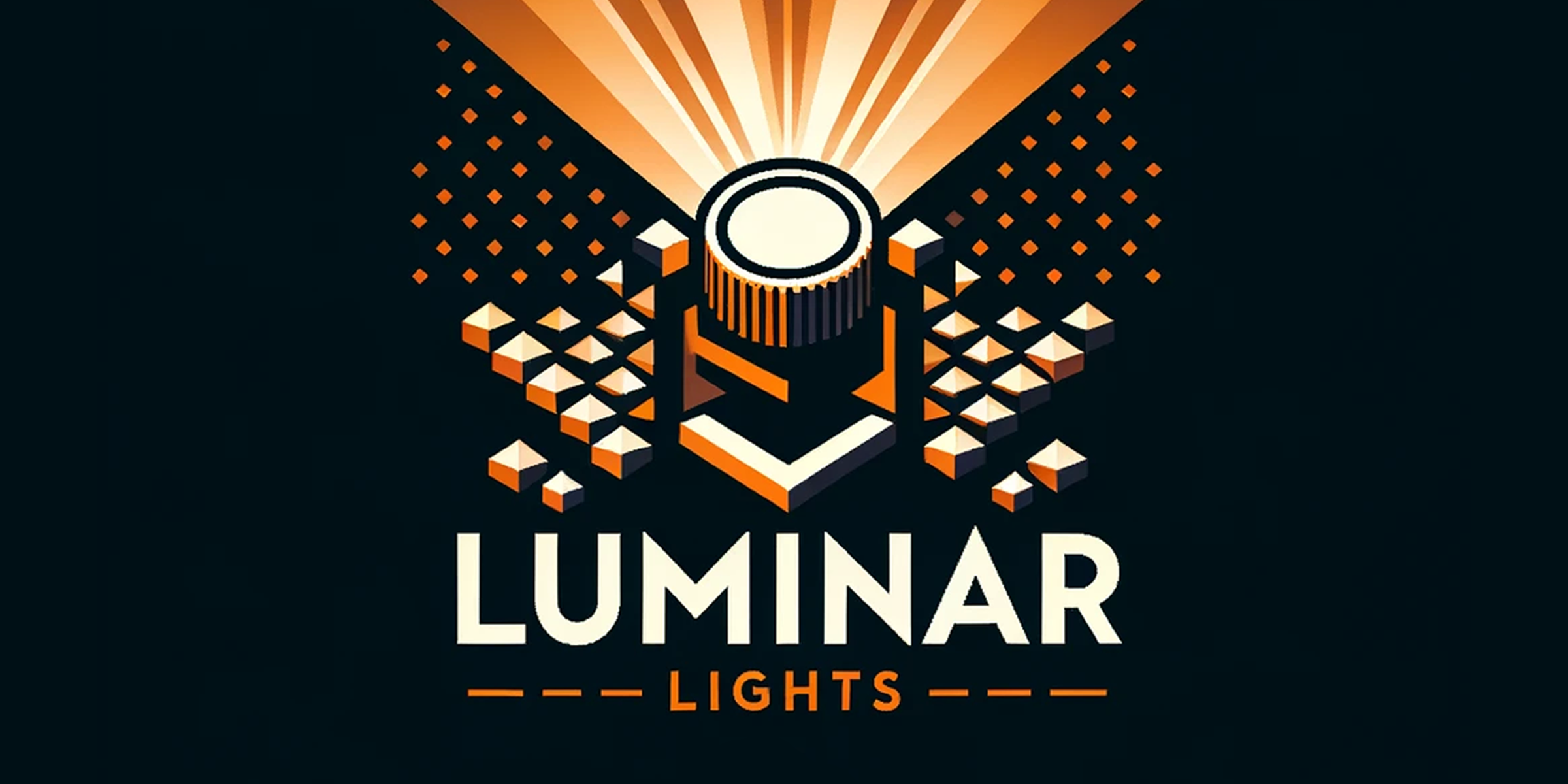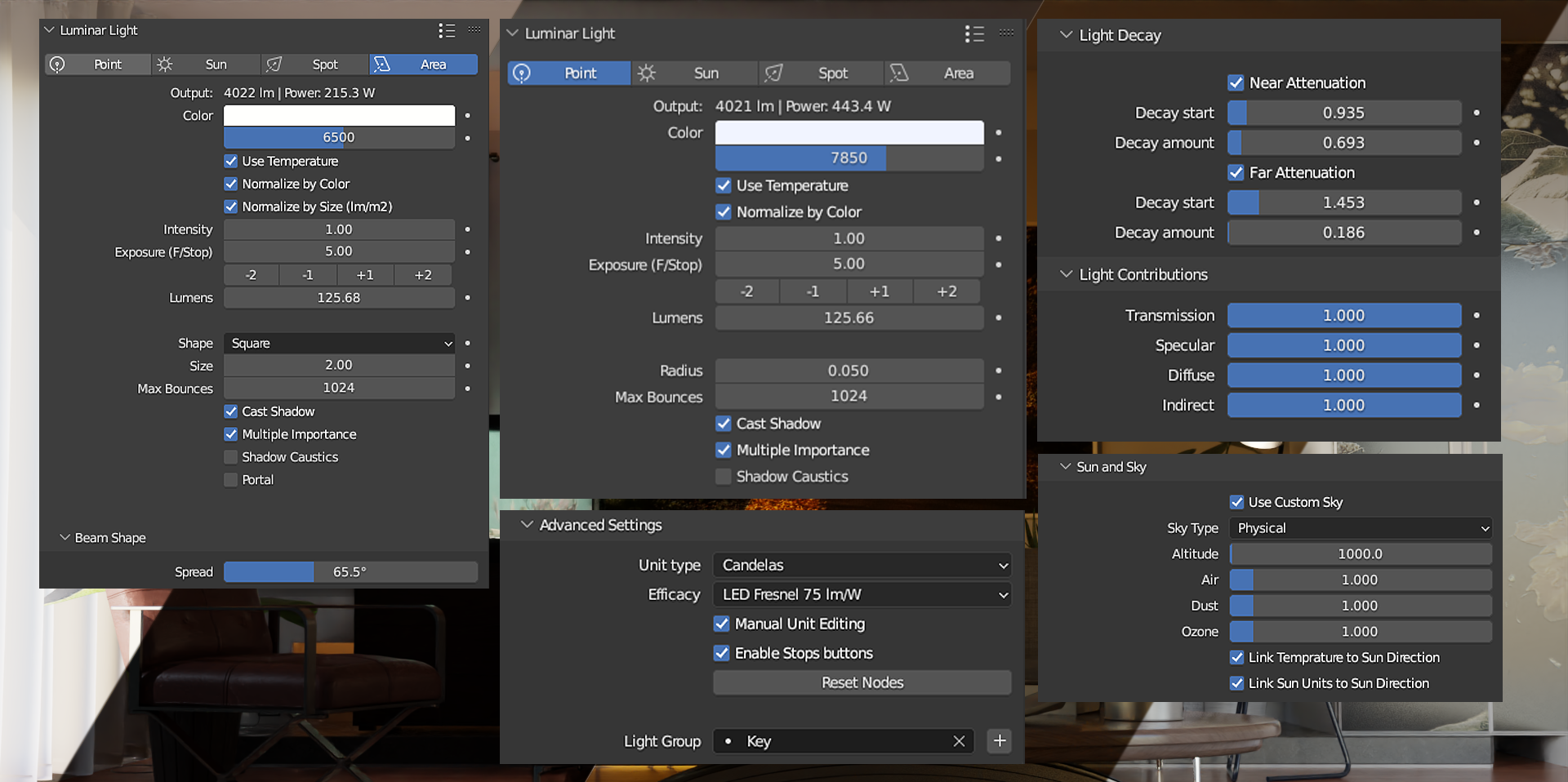Luminar Lights
Luminar Lights!
Luminar Lights is a Blender add-on that provides a robust photometric lighting system that allows artists to create precisely controlled and easy to use realistic lighting conditions based on real-world light fixtures, measurements and color temperatures, streamlining their workflows and increasing their artistic efficiency.
Let me first start by saying that Luminar Lights it’s not just an add-on, it’s an idea. The idea that we can bring together the most advanced tools and concepts used in professional lighting workflows, making Blender the ultimate package for creating high-level, detailed renders. While Blender has massively improved over time, there is still a gap when it comes to lighting. That's precisely the void that Luminar Lights aims to fill.
I've created Luminar Lights to empower artists who grapple with lighting in Blender, regardless of their skill level, demonstrating that ANYONE can bring their scenes to life with the right tools at their disposal. Whether you're aiming for hyper-realistic results or wish to push the boundaries of physical lighting, Luminar Lights gives you the power to achieve your vision quickly and effortlessly.
Increase Realism and precision with photometric units
But what’s the deal with photometric units? Well, each type of photometric unit measures light in a different way and takes into account different variables. Mimicking this calculation lets us artists create lights that are closer to physically accurate lights.
Luminar Lights allows you to calculate and seamlessly alternate between these photometric units allowing you the maximum customization of the lighting scenario you want to achieve. Depending on the type of light you’re using you’ll get different options to choose from whether you’d like your light to behave one way or another.
Choose between several premade Luminous Efficacies or set your custom one, prevent your light from losing brightness when scaling with the new Size Normalization parameter, or make it output the same apparent brightness regardless of the color with the Color Normalization feature.


Easier and Powerful Intensity Controls
Take advantage of the widely used multiplication system parameters to quickly set up the light energy you need. Vanilla Blender only allows us to handle Light energy with one parameter. Now with this new system of set and forget, you can define a base intensity level and adjust it linearly with the Intensity parameter or use the Photometric Exposure of the F/stop system to adjust the light just the way you want to. And If you ever want to change from one unit to another don’t panic, Luminar does all the calculations for you to change between all units and maintain energy output all across them.
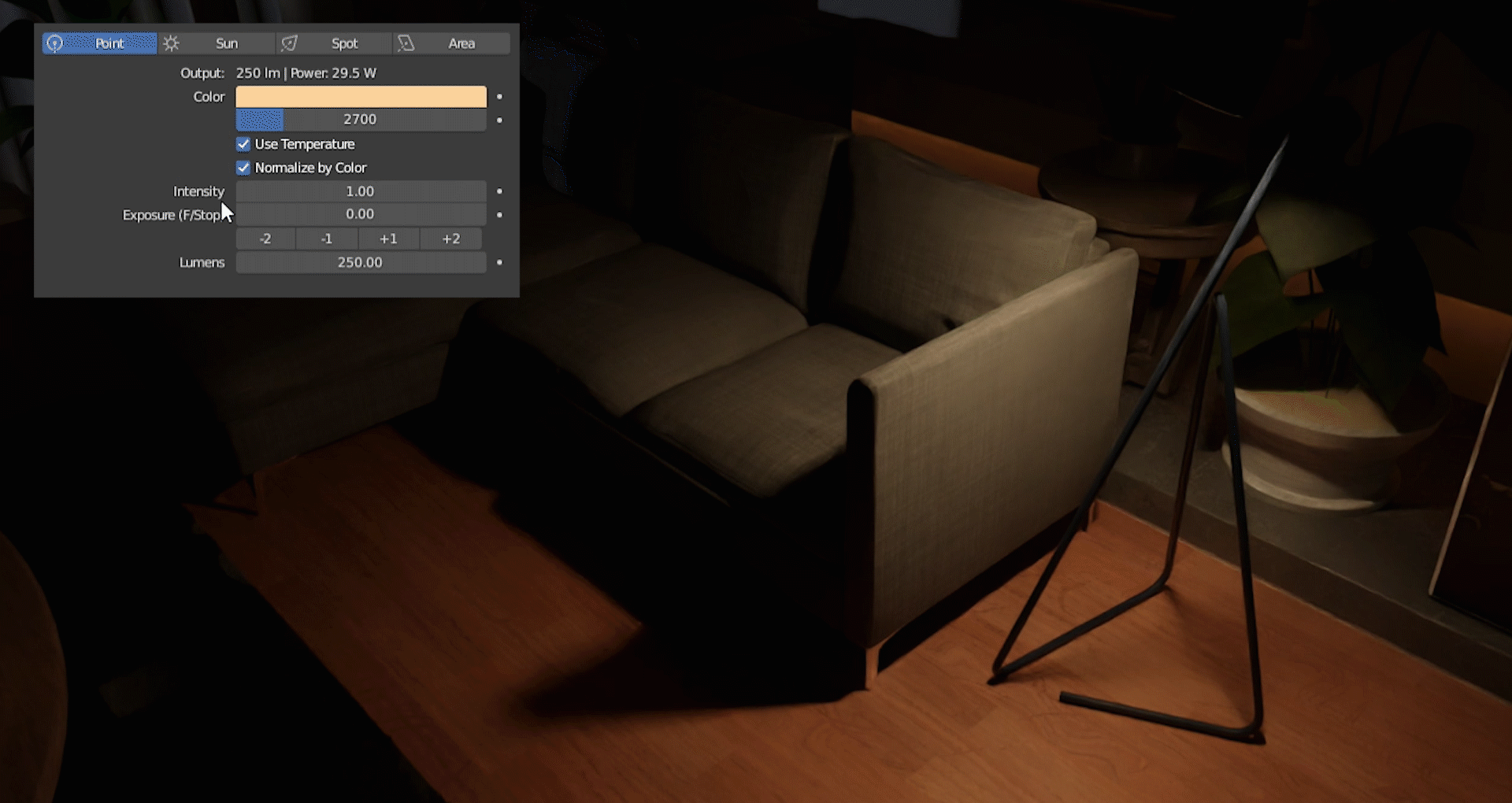
Bend the Rules of Physics and unleash creativity
Physically accurate lights are amazing but sometimes we need to bend the rules a bit to achieve our artistic needs. That’s why Luminar Lights incorporates a Light Decay Node System that lets you define manually where to start and end your light intervention and also allows you to manipulate how your light affects your scene through the new Light Contributions Node System. This will make your life way easier when you are dealing with those annoying fireflies of bouncing rays without having to compromise the render settings of your whole scene.


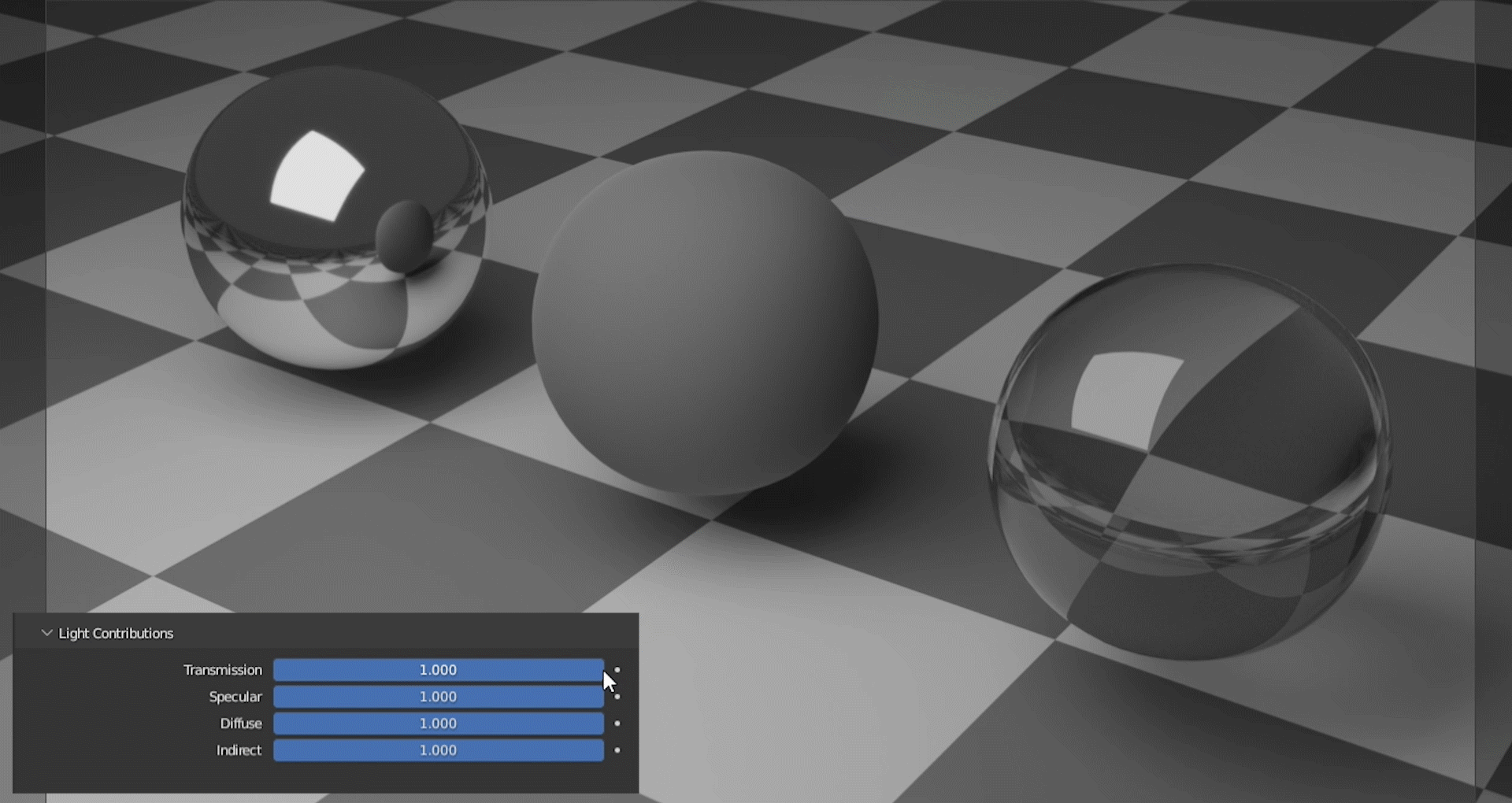
Create the mood you want quicker with Sun Lights and Sky Textures
I know.. we all love HDRIs. But sometimes you need the extra control that only a Custom Sun and Sky can achieve, and in blender that can be tricky. Now instead of having to match everything by hand just worry about getting the angle that you need for your Sun and let Luminar figure out the rest.

Don’t forget to set your scene exposure accordingly with your Sun and Sky with the new Set Exposure to Light buttons in the Advanced Sun settings panel.

Do you want to create a quick realistic night scene with beautiful moonlight? Easy, just create a new Luminar SunLight, set the custom sky to Simple, set the Lux Power to 10 and the Kelvin Temperature to be 12k. Don’t forget to click on Set Exposure to this light so all your light’s match with the scene set up!
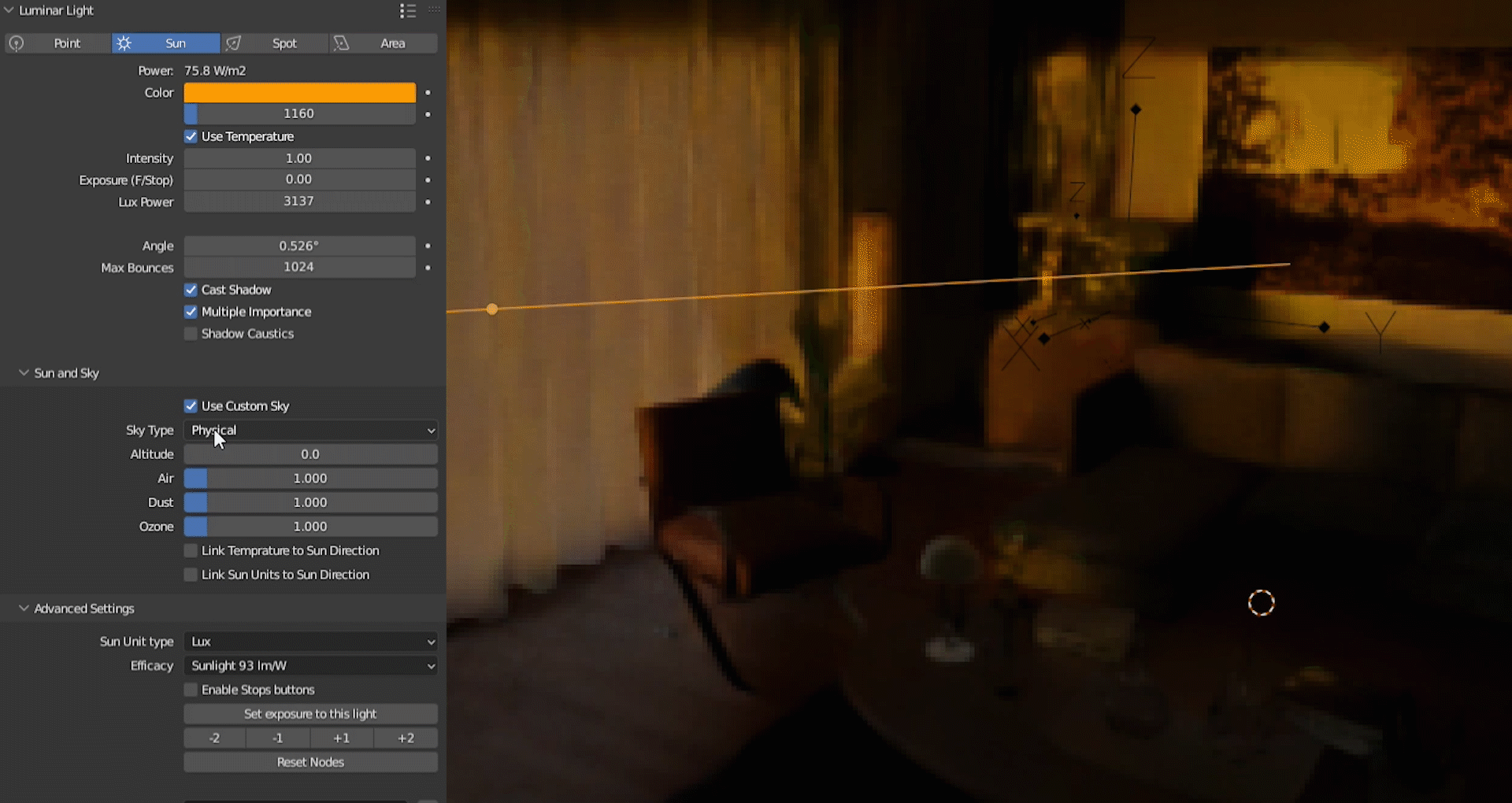
Link your Lights Faster
Setting up Light AOVs can drastically impact the time you spend on a scene. And every second counts, don’t you just hate going back and forward with panels? That’s why now Light AOV panel is incorporated directly into the light. And if you are experimenting with the new Light Linking panel don’t worry I got you covered, that’s also included now in Luminar Light’s panel.
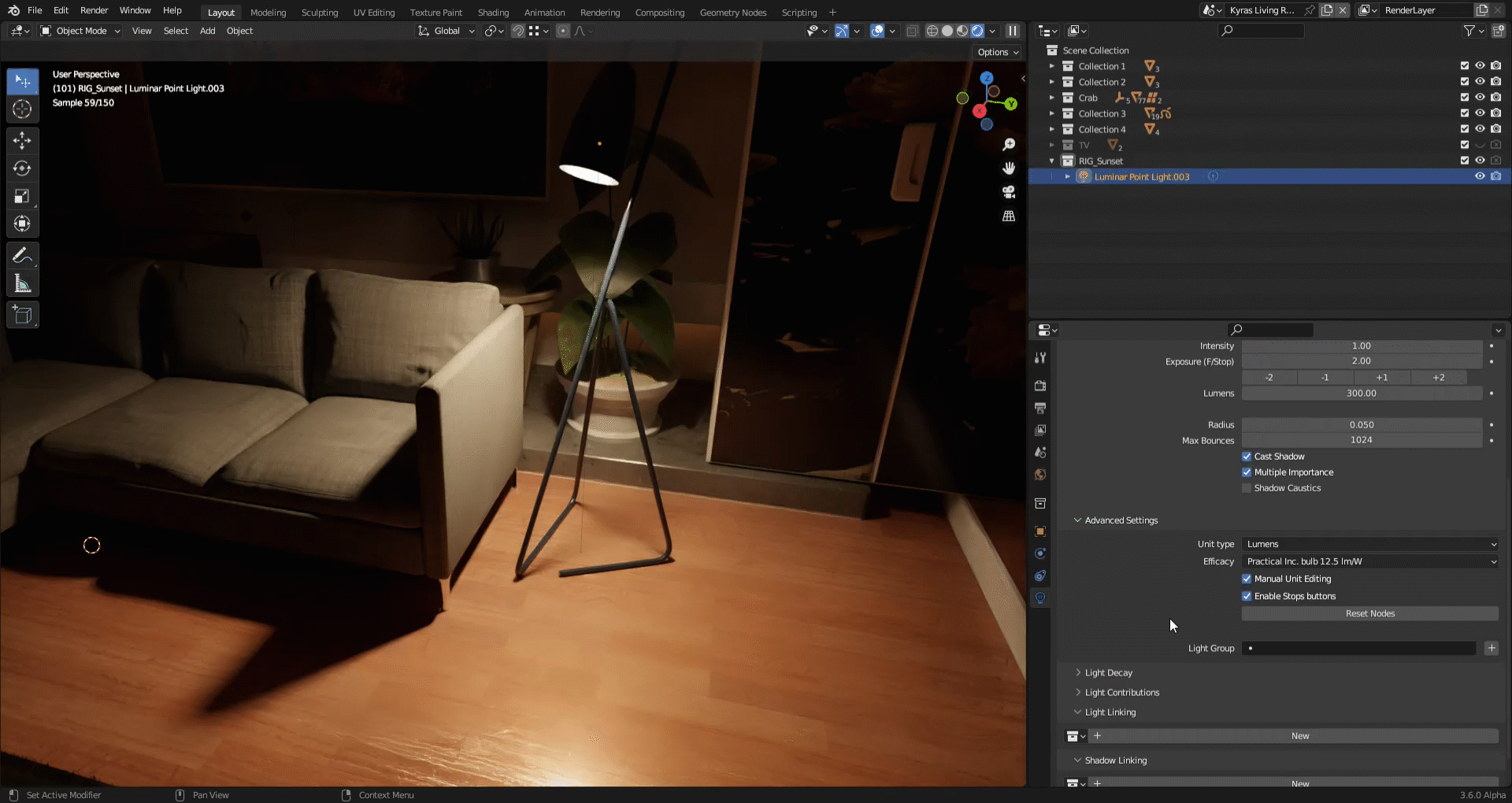
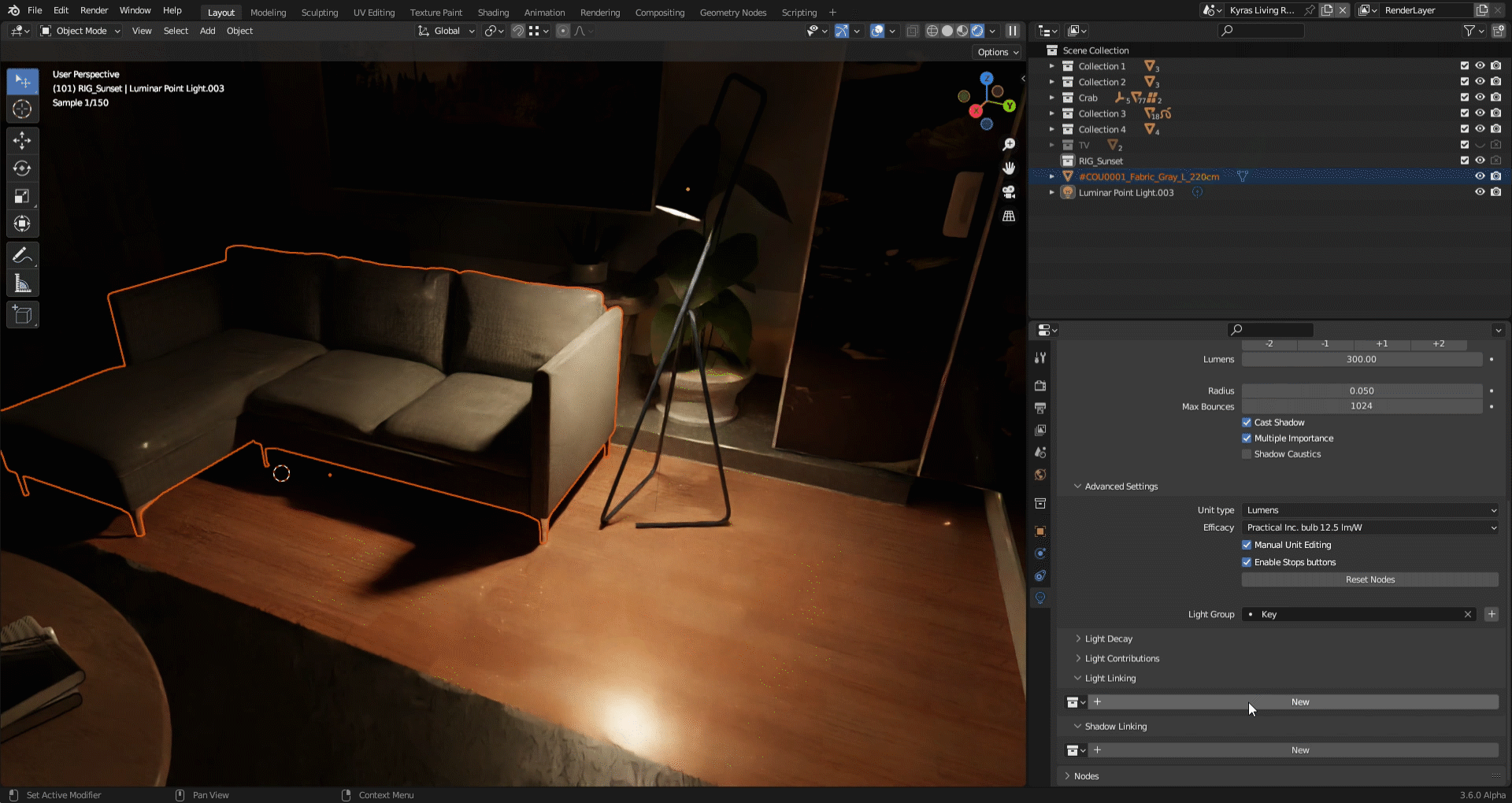
Iterate Faster with Presets
“But Lumens, Candelas, Light Efficacy, Size Normalization, Color Normalization.. I don’t know where to start”. I understand the feeling, we all have been there. Now with Luminar Lights you’ll have the ability to choose from a bast list of presets for each type of light that aims to set you nice and quick with the most used type of lights that you’ll typically get on common scenarios, such as indoor lighting, practical lights, sun types, spot types, etc. You spent two hours finding the specifications for that sweet HMI fresnel you wanted to use in your scene? Now you can save it and re use it on other scenes creating your own presets for all types of lights.
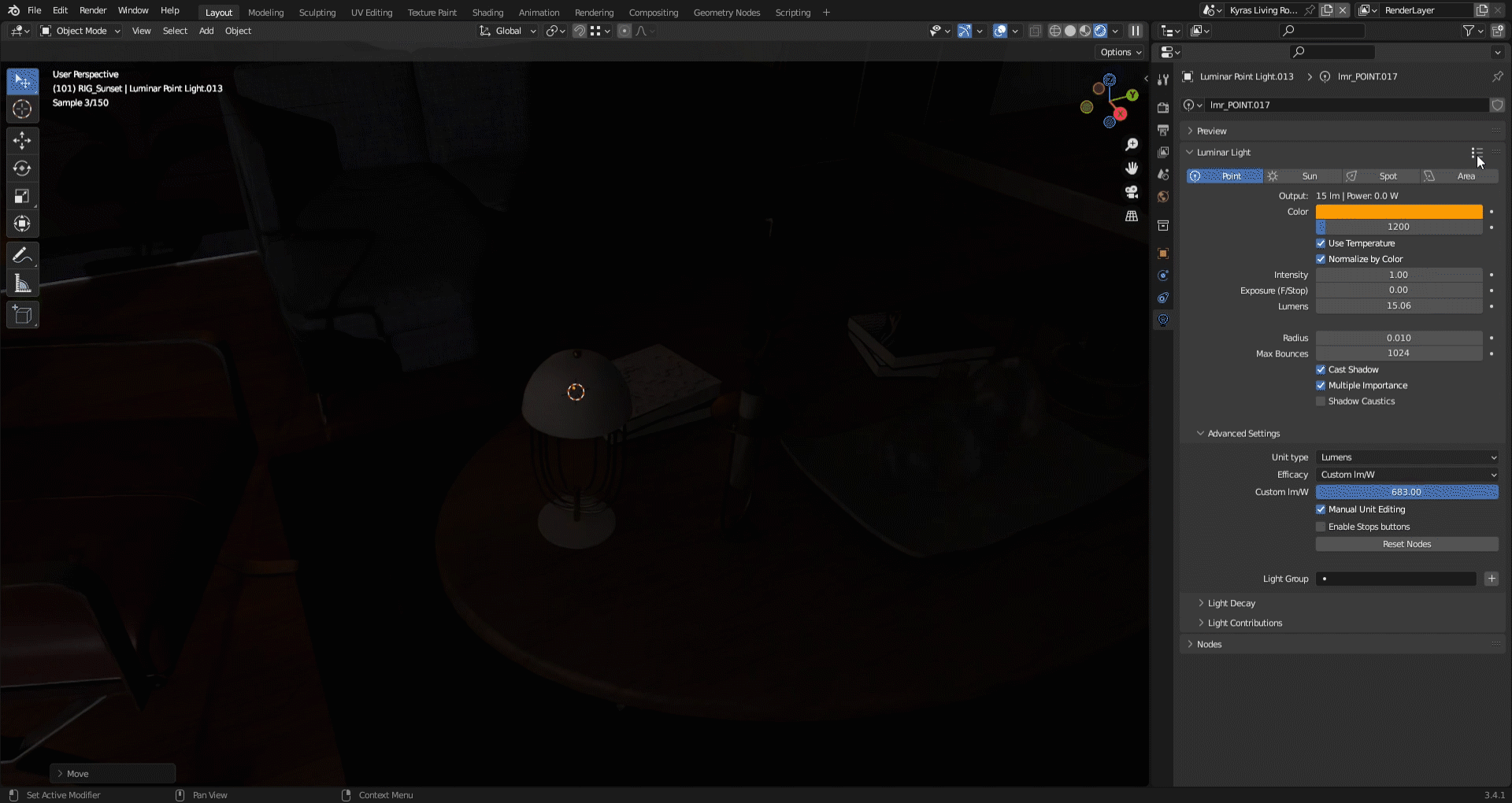

Important Clarifications:
- Some Features like Light Decays, Contributions, Light AOVs and Light Linking are only available for CYCLES.
- Light Linking only works with version 3.6.0 Alpha version until further release by the Blender Team.
Known Bugs:
- Presets folder called "luminar" included in the zip "LuminarLights-1.0.4-presets" need to be copied mannualy to "C:\Users\YourUserName\AppData\Roaming\Blender Foundation\Blender\YourBlenderVersion\scripts\presets" due to a fail in blender writting permission copying the files from the original folder to the presets one. (v5xf001)
- Some functionalities may not work if the Language is set to Italian (v5xl002)
Complete least of features:
- NewNew Photometric Units of Energy Messurement for lights. Including Lumens (lm), Candelas (cd) and Lux (lx).
- Global light energy calculation allowing the user to change between Units of Messurement mantaining energy output consistency.
- Photometric Luminous Efficacy Parameter (lm/m2)
- Presets for Photometric Luminous Efficacy Parameter.
- Kelving Color Temperature for lights.
- Color Normalization feature for photometric Light Units.
- Size Normalization feature for Area lights photometric Light Units.
- Linear (intensity) and Photographic (F/stop) parameters alongside Base Energy Unit for easier and more precise light managment.
- Stop Buttons for Light Exposure to faster Iteration.
- Spread and Spot Size now work in conjuntion with photographic units to represent accurate light behaivour.
- Moved Light Groups panel into Luminar Light panel for easier acces.
- Moved Contributions panel into Luminar Light panel for easier acces.
- Light Decay Node System for Cycle lights.
- Light Contributions Node System for Cycle lights.
- Sun and Sky panel with the ability to link Sun light to Simple or Physical sun type and create physical accurate Sun intensity and Color representation.
- New Set exposure to Sun Light and Buttons to quickly set the scene's exposure.
- Presets for all type of lights and the ability to store and re use new lighting presets
Changelog:
- V1.03 2023/29/05 - Initial Release
- V1.04 2023/13/06 - ChangeLog:
** Stop buttons work by 0.5 and 1 instead of 1 and 2.5 to better help manage retakes.
** Spot and Area Candela Lights mantain energy leveles better regardless of the spread.
** Fixed Minor Bugs.
Show your support for Luminar Lights!
https://www.instagram.com/arttizan3d/
Wanna chat or have insights?
arttizan3d@gmail.com
3D scenes used:
https://www.blenderkit.com/asset-gallery-detail/0b49233f-3671-41a6-84e4-fce668915a03/
Discover more products like this
3d modeling Light Contributions Node System 3D rendering Intensity controls realistic-lighting Lighting creativity Lighting scenarios Indoor lighting Luminar Lights Blender Add-on Light AOV blender 3d 3d-lighting F/stop system 3D lighting techniques. 3D art tools Luminous Efficacies Sun and Sky panel Photorealistic rendering Scene exposure Photometric units Light fixtures measurements Physically accurate lights Light Linking panel Light Decay Node System Lighting presets Kelvin Color Temperature Light energy Outdoor lighting Photometric Luminous Efficacy Custom Sun and Sky Color Normalization Photometric lighting Size Normalization Light calculation Real-time rendering 3D software add-ons Color temperatures
